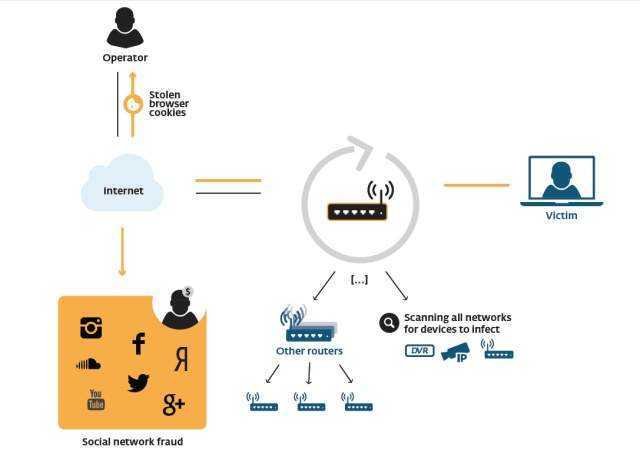Νέα επίθεση malware στοχεύει τα social media και διανέμεται μέσω των οικιακών συσκευών router. Μόλις μολυνθούν, οι παραβιασμένες συσκευές είναι ικανές να κλέψουν τα μη κρυπτογραφημένα data network traffic.
Once infected, infringing devices are ready to steal unencrypted network traffic data and offer brokerage services to the botnet operator.
In practice, they are used to steal HTTP cookies to perform cheating actions on Facebook, Twitter, Instagram, You Tube, and other web sites that include making follow, views, and likes.
- What is Moose malware?
The Linux / Moose is a family of malware that primarily targeted Linux-based consumer home router devices, but is also thought to be responsible for infecting other embedded Linux-based systems. Also among other things, the threat is said to have potential for network penetration, beyond the usual compared to other malware attacking router devices.
According to researchers της εταιρείας ESET, αυτού του είδους το malware έχει και δυνατότητες να επαναδρομολογήσει το DNS traffic, which enables man-in-the-middle attacks on the Internet.
According to the statement of Olivier Bildand, ESET researcher:
"Considering the basic techniques used by Moose to gain access to other devices, it is regrettable that the security of embedded devices does not seem to be taken seriously by network manufacturers. We hope that our efforts will help consumers to understand how malicious agents are attacking their devices. "






